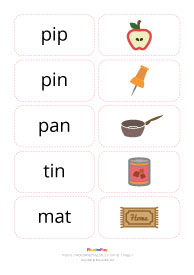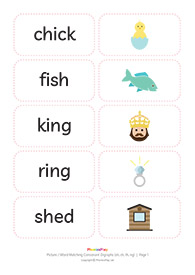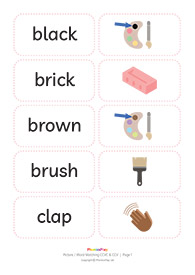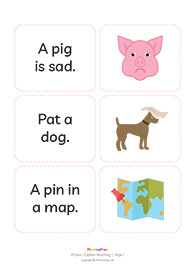Applying phonics
As with any new learning children will become confident much more quickly when given opportunities to apply what they have learned as soon as possible and in as many varied, creative and fun ways as possible. Therefore teachers need to look closely at whatever phonics they are teaching in a given week and ensure that children have the opportunity to use those GPCs and their blending/segmenting skills in the same week. For example children working on split digraphs in phonics need to be given opportunities to read and write words containing split digraphs. This sounds both simple and obvious but it requires quite a bit of thought, planning and preparation particularly if children in the same class are working on different phases as they will need opportunities for applying the different things that they have learned.
The only limits when it comes to applying phonics are the limits of your imagination. Here are just a few (fairly obvious) starting points.
Role play
Choose a theme that will give opportunities for rehearsal of the GPCs that the chilldren need to work on. Ensure there are posters, captions, labels etc for the children to read and also ensure that there are a range of pencils, pens, card, paper, post it notes etc so that the children can copy the words as part of their play and also write labels, captions and messages of their own. This won't just happen by accident you will need to think carefully about how to bring about opportunities for children to write the words that they need to work on and how to build this into their play.
Guided reading
Encourage children to play detective and try to be the first to spot the graphemes that you have been working on in phonics. Obviously, this is a bit more fun and less predictable when you use real books as opposed to books specifically written to contain certain graphemes. Also, encourage children to apply the blending skills they have learned and relate this back to things that they recall from their phonics session. While children are working through the phonics phases, guided reading sessions may well have a large element of phonics in them and could almost be considered guided phonics sessions. However, you also need to provide opportunities for children to develop comprehension skills and, of course, a love for and enjoyment of books.
Independent activities while the teacher is doing guided reading with other children
It is very important that the teacher and/or TA is completely free to concentrate on the group that they are working with. This means that the other children need to be trained up to work completely independently. The key to this is training and it may take a little while to get a class into this habit. Don't even to try to start guided reading until you have trained all children to work independently - this may take several weeks. Teach each activity to the whole class. Model it explicitly and make especially sure that the children know what to do when they have finished (choose another task, start again etc) Fortunately however, this independent time is a perfect opportunty to give children tasks which allow them to apply their phonics. The list of possibilities is endless. Here are a few examples:
Give children playdough and encourage them to make the graphemes that they have been learning in phonics, You can either buy playdough or make it yourself by following a simple Playdough recipe.
Give children picture and word matching cards for the set of letters they are working on.
Encourage them to race to see which child/pair/small group can match them all up quickest or play a range of matching games such as snap, pelmanism etc.
Give children pictures and ask them to write the words to go with these pictures. Make this more fun by giving a wide range of pens, pencils and lots of different sizes and colours of paper. Alternatively ask children to work in pairs/small groups. Turn over one picture card and race to see who can be first to accurately write the word on a whiteboard. The children can compare their boards to see if they agree on how to spell the word.
Give children picture or word cards and ask them to say and then write simple sentences containing those words.
Give children pictures that illustrate a caption. Match the captions to the pictures or given a picture write the caption or vice versa.
Once children are familiar with games from Letters and Sounds they can play some of these independently either using paper versions Printable resources or by playing the interactive games on this site Interactive resources
Grapheme detectives - look through a book they have read with the teacher and write down all the words they can find that contain a particular grapheme. Compete to see who can find the most words. Make this even more fun by wearing police hats and pretending to talk to each other on walkie talkies.
Use magnetic letters/letter stamps etc to experiment with making words to match those on word cards or match picture cards.
Treasure hunt - stick picture cards around the classroom. Give each child a list of words that they need to collect. Children find the pictures that they need from their list and see who can find their whole list first.
Literacy Lessons
The units of the new literacy framework are focused on specific text types. Wherever possible give children the chance to read texts of this type at a level that they can read. Ensure that whatever writing you ask children to do provides lots of opportunities for using the graphemes that they are working on. For example in a unit on reports you may ask all children in the class to write a simple leaflet giving facts about animals. However children working on Phase 2 may feature these animals - cat, dog, rat, duck, hen. Children at Phase 3 may have sections for - chicken, fish, sheep, goat, cow. Children at Phase 4 could write about - frog, crab, shark, skunk, chimp.
Across the curriculum
Every opportunity should be exploited in every curriculum area to use GPCs that the children have been working on. Encourage the children to spot when these GPCs are used.






